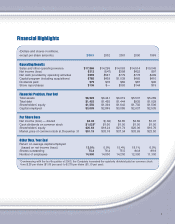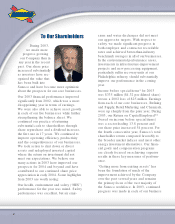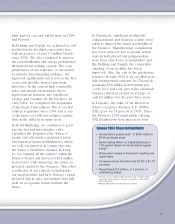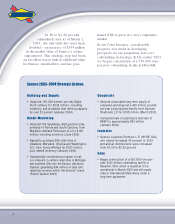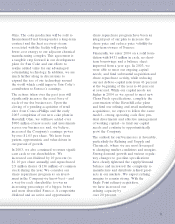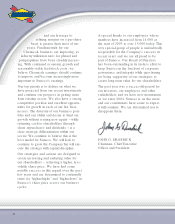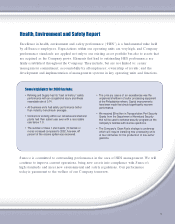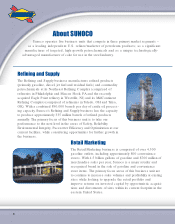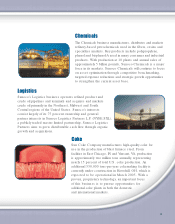Sunoco 2003 Annual Report Download - page 13
Download and view the complete annual report
Please find page 13 of the 2003 Sunoco annual report below. You can navigate through the pages in the report by either clicking on the pages listed below, or by using the keyword search tool below to find specific information within the annual report.
Management’s Discussion and Analysis of Financial Condition and Results of Operations
Management’s Discussion and Analysis is the Company’s analysis of its financial performance
and of significant trends that may affect future performance. It should be read in conjunction with
Sunoco’s consolidated financial statements and related notes. Those statements in Management’s
Discussion and Analysis that are not historical in nature should be deemed forward-looking state-
ments that are inherently uncertain. See “Forward-Looking Statements” on page 38 for a dis-
cussion of the factors that could cause actual results to differ materially from those projected.
Overview
Sunoco’s profitability is primarily determined by refined product and chemical margins and
the reliability and efficiency of its operations. The volatility of crude oil, refined product
and chemical prices and the overall supply/demand balance for these commodities have
had, and should continue to have, a significant impact on margins and the financial results
of the Company.
During the first half of 2001, refined product margins in Sunoco’s principal refining centers
in the Northeast and Midwest were extremely strong, benefiting from exceptionally low
industry refined product inventory levels and very strong product demand. However, prod-
uct margins declined significantly in the second half of 2001 and remained low throughout
the first nine months of 2002 due to high industry inventory levels, rising crude oil prices,
a higher level of gasoline imports from Europe and warmer winter weather in early 2002. In
the latter part of 2002, refining margins began to improve, and throughout most of 2003
were once again very strong, benefiting from low industry refined product inventory levels,
colder winter weather in early 2003, strong gasoline demand and supply disruptions.
Chemical margins for most products were weak during 2001 and most of 2002 as a result of
an oversupplied marketplace. In the latter part of 2002, chemical margins began to
strengthen in response to price increases due to phenol supply disruptions in the United
States and an improvement in product demand. This improvement continued during 2003
as chemical prices continued to rise and product demand strengthened further as a result of
an improving U.S. and global economy.
In 2004, the Company believes refined product margins should remain above historical
averages, primarily due to more stringent fuel specifications as a result of sulfur reductions
in gasoline and MTBE-related product changes, and to higher transportation rates. These
factors are expected to tighten the supply/demand balance. In addition, the Company be-
lieves chemical margins and volumes will improve in 2004 assuming the strengthening
U.S. and global economy continues to favorably impact demand. However, the absolute
level of refined product and chemical margins is difficult to predict as they are influenced
not only by the above factors but also by a number of other extremely volatile factors in
the global marketplace including: crude oil, natural gas and other feedstock price levels
and availability; crude oil, petroleum and chemical product inventory levels; product de-
mand; refinery and chemical plant utilization rates; and geopolitical events.
The Company expects 2004 operating results to be adversely impacted by an approx-
imately $15 million after-tax increase in pension and postretirement benefits expense,
largely as a result of the impact of falling interest rates on projected plan benefit
obligations.
The Company’s future operating results and capital spending plans will also be impacted by
environmental matters (see “Environmental Matters” below).
11


